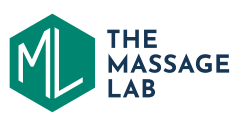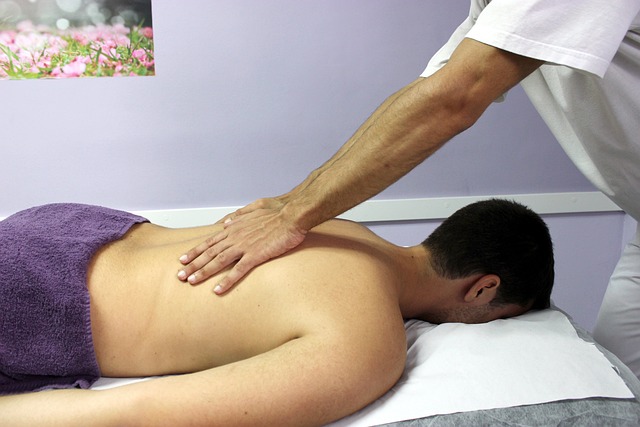Aftercare Following a Deep Tissue Massage
Deep tissue massage is a therapeutic technique that aims to reach deeper layers of muscles to relieve tension and pain. After such a treatment, it is important to take certain aftercare measures to support your body and achieve the best possible results.
In this article, we will discuss the key steps and recommendations for aftercare following a deep tissue massage and show you how to make the most out of your treatment.
Rest and Relaxation
After an intense deep tissue massage, it is important to give your body time to rest and relax. The massage process can put a strain on the body and stimulate muscles and tissues. Therefore, it is advisable to take a break after the treatment and allow the body to regenerate.
Some recommendations to consider for rest and relaxation include:
- Find a comfortable and quiet space where you can relax and unwind.
- Take a nap or get a good night’s sleep to aid in the healing process.
- Avoid engaging in mentally or physically demanding tasks immediately after the massage.
Hydration
During the massage, toxins and deposits are released from the muscles. To flush out these waste products from the body, adequate hydration is crucial. Drink plenty of water after the treatment to support the cleansing process and avoid potential headaches or discomfort.
Some tips for optimal hydration include:
- Aim to drink at least 8 glasses of water throughout the day.
- Consider adding electrolytes or herbal teas to replenish your body’s hydration levels.
- Avoid excessive consumption of caffeine or alcohol, as they can dehydrate the body.
Avoidance of Strain
After a deep tissue massage, it is important to avoid physical exertion and intense sports activities. The massage can temporarily make muscles and tissues more sensitive, and excessive strain can lead to injuries. Give your body a break and avoid strenuous activities for at least 24 hours after the treatment.
Some suggestions to prevent strain include:
- Engage in light activities such as gentle walks or stretching exercises to maintain mobility.
- Listen to your body and avoid pushing yourself beyond your limits.
- Gradually increase your activity level as your body recovers and adjusts.
Stretching and Movement
Although physical exertion should be avoided, it is still important to keep your body moving and gently stretch your muscles. Light stretching exercises can help relax the muscles and promote the healing process. However, be sure to respect the limits of your body and avoid painful stretches.
Some stretching and movement recommendations include:
- Perform gentle stretches for the areas that were targeted during the massage.
- Practice deep breathing exercises to promote relaxation and oxygen flow to the muscles.
- Consider incorporating activities such as yoga or Pilates into your routine to improve flexibility and strength.
Cooling or Heating
Depending on individual needs, cold or heat therapies can be effective after a deep tissue massage. Cold packs can help reduce swelling and alleviate inflammation. On the other hand, heat therapies such as warm compresses or a warm bath can promote muscle relaxation and support the healing process. Consult with your therapist to determine the best option for your specific needs.
Some cooling or heating techniques you can try include:
- Apply an ice pack or a bag of frozen vegetables wrapped in a towel to the affected area for 10-15 minutes.
- Use a heating pad or take a warm bath with Epsom salts to soothe sore muscles.
- Alternate between cold and hot treatments to further enhance the therapeutic benefits.
Pain Relief
A deep tissue massage can temporarily cause mild muscle soreness or pain. To alleviate these discomforts, you can turn to gentle pain relievers such as over-the-counter pain medications or anti-inflammatory creams. However, avoid using strong painkillers unless prescribed by a doctor.
Some pain relief strategies to consider include:
- Apply a topical analgesic cream or gel to the affected area to reduce pain and inflammation.
- Take over-the-counter pain medications such as acetaminophen or ibuprofen, following the recommended dosage.
- Consider alternative pain management techniques such as acupuncture or aromatherapy.
Regular Treatments
To reap long-term benefits from a deep tissue massage, regular treatments should be considered. The frequency of massages may vary depending on individual needs, but regular sessions can help release tension and improve overall muscle health. Discuss with your therapist the recommended treatment frequency for your specific concerns.
Some benefits of regular treatments include:
- A cumulative effect on muscle relaxation and stress reduction.
- Improved blood circulation, which promotes healing and reduces muscle tension.
- Enhanced overall well-being and the maintenance of a balanced mind-body connection.
Communication with the Therapist
During the deep tissue massage, it is important to communicate openly and honestly with your therapist. Provide feedback about your comfort level, pain sensitivity, and any concerns you may have. Your therapist can adjust the massage intensity to meet your needs and provide valuable advice for aftercare.
Some communication tips with your therapist include:
- Inform your therapist about any pre-existing medical conditions or injuries that may affect the massage.
- Speak up if you experience any discomfort or pain during the massage.
- Seek clarification on any instructions or recommendations provided by your therapist.
Conclusion
Aftercare following a deep tissue massage is of great importance in optimizing the results of the treatment and supporting the body. Rest, adequate hydration, and gentle movement are some of the key steps to follow after such a massage. Remember to communicate with your therapist and consider regular treatments to achieve long-term benefits. By properly managing the aftercare process, you can make the most out of a deep tissue massage and bring your body into a healthy balance.
Frequently Asked Questions
1. Why is rest and relaxation important after a deep tissue massage?
After a deep tissue massage, rest and relaxation are important to allow your body time to recover and regenerate. The massage process can put strain on the body and stimulate muscles and tissues. Giving your body a break after the treatment can help it recover effectively.
2. How does adequate fluid intake help after a deep tissue massage?
During a massage, toxins and deposits are released from the muscles. To flush out these waste products from your body, it is crucial to have sufficient fluid intake. Drinking plenty of water after the treatment helps support the cleansing process and prevents possible headaches or discomfort.
3. Why should physical exertion and intense physical activities be avoided after a deep tissue massage?
After a deep tissue massage, it is important to avoid physical exertion and intense physical activities. The massage can temporarily make muscles and tissues more sensitive, and excessive strain can lead to injuries. Give your body a break and avoid strenuous activities for at least 24 hours after the treatment.
4. Is it recommended to stretch and move after a deep tissue massage?
While physical exertion should be avoided, it is still important to keep your body moving and gently stretch the muscles. Light stretching exercises can help relax the muscles and promote the healing process. However, it is important to respect the limits of your body and avoid painful stretches.

